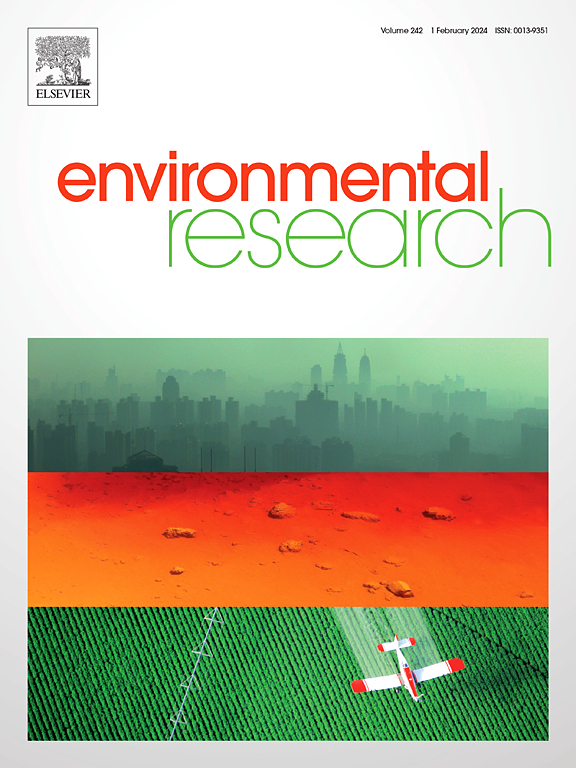The role of interface interaction between iron/sulfate-reducing bacteria (ISRB) and goethite in sulfur (S) redox cycling couple with Cd immobilization
IF 7.7
2区 环境科学与生态学
Q1 ENVIRONMENTAL SCIENCES
引用次数: 0
Abstract
Microbial sulfate reduction leads to the formation of various chalcophile trace metal sulfides, thereby immobilizing chalcophile trace metals in sediments. Iron/sulfate-reducing bacteria (ISRB) are ubiquitous in soils and sediments, its ability to reduce Fe(III) (oxyhydr)oxides and biogeochemical significance have attracted much attention. This research investigated the effect of the goethite and ISRB induced S cycle on cadmium mobility. The experiment demonstrated that the removal of Cd(II) in coexistence of ISRB19 and goethite was more efficiently than their individual components. Combined with X-ray absorption spectroscopy (XAS), transmission electron microscopy (TEM), Raman spectra and X-ray photoelectron spectroscopy (XPS), conclusions can be drawn that goethite enhanced Cd(II) retention by ISRB, which was attributed to the formation of metabolism product during interaction between ISRB19 (Enterobacter chengduensis) and goethite. Our results revealed the interaction of goethite and ISRB in S cycling under anaerobic conditions with its implications for Cd(II) remediation.
铁/硫酸盐还原菌(ISRB)与鹅卵石之间的界面相互作用在硫(S)氧化还原循环耦合与镉固定中的作用。
微生物的硫酸盐还原作用会形成各种亲铬痕量金属硫化物,从而固定沉积物中的亲铬痕量金属。铁/硫酸盐还原菌(ISRB)在土壤和沉积物中无处不在,其还原铁(III)(氧水)氧化物的能力和生物地球化学意义备受关注。本研究调查了鹅卵石和 ISRB 诱导的 S 循环对镉迁移率的影响。实验证明,ISRB19 和鹅绿泥石共存时对 Cd(II) 的去除效率高于其单独成分。结合 X 射线吸收光谱(XAS)、透射电子显微镜(TEM)、拉曼光谱和 X 射线光电子能谱(XPS),可以得出结论:鹅卵石增强了 ISRB 对 Cd(II)的截留,这归因于 ISRB19(成都肠杆菌)与鹅卵石相互作用过程中形成的代谢产物。我们的研究结果揭示了在厌氧条件下,鹅卵石和 ISRB 在 S 循环中的相互作用及其对镉(II)修复的影响。
本文章由计算机程序翻译,如有差异,请以英文原文为准。
求助全文
约1分钟内获得全文
求助全文
来源期刊

Environmental Research
环境科学-公共卫生、环境卫生与职业卫生
CiteScore
12.60
自引率
8.40%
发文量
2480
审稿时长
4.7 months
期刊介绍:
The Environmental Research journal presents a broad range of interdisciplinary research, focused on addressing worldwide environmental concerns and featuring innovative findings. Our publication strives to explore relevant anthropogenic issues across various environmental sectors, showcasing practical applications in real-life settings.
 求助内容:
求助内容: 应助结果提醒方式:
应助结果提醒方式:


